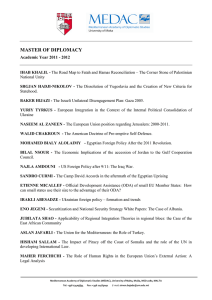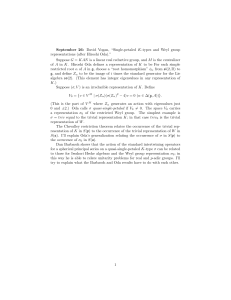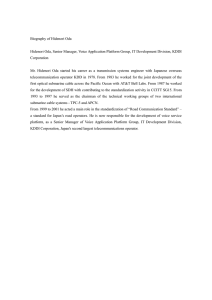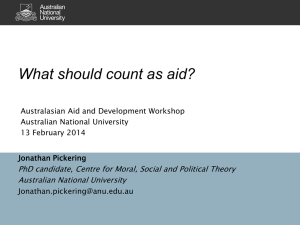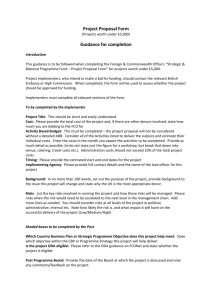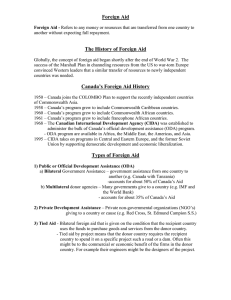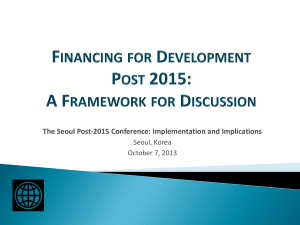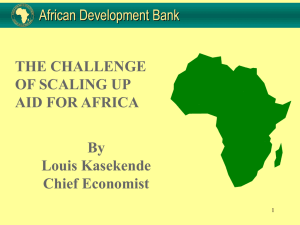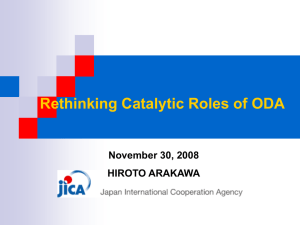Official Development Assistance to and from ESCWA Region
advertisement
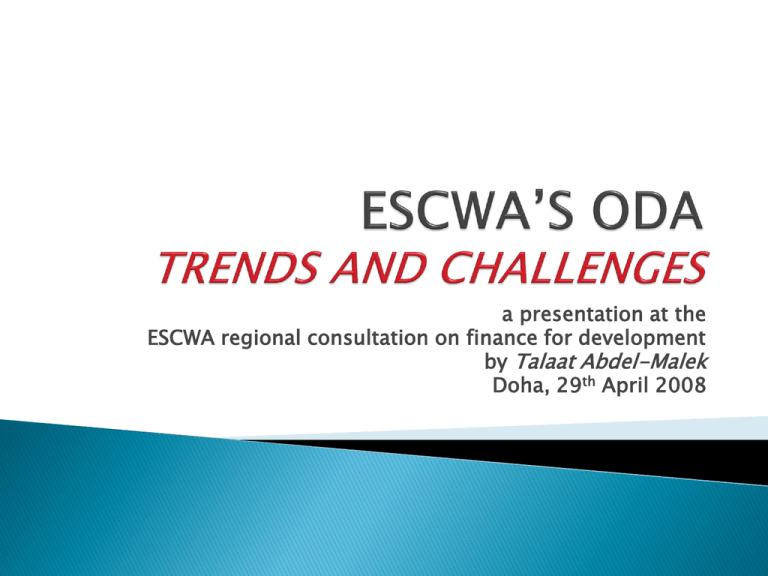
a presentation at the ESCWA regional consultation on finance for development by Talaat Abdel-Malek Doha, 29th April 2008 ESCWA has been a major recipient as well as a major source of ODA for the past 30 years Without referring to many figures, ODA flows have been characterized by the following: Substantial variability of flows over time:$16 b in 1977 > $6 b in 2000 > $12 b+ in 2004 Wide differences among recipient countries by all indicators (per capita, etc) 2 Sharp differences in ODA management Main reasons for variability of flows: From Arab sources: oil revenues – geopolitical factors (Peace Treaty with Israel, Palestine, Iraq, etc) – recent tendency to focus on domestic infrastructure From non-Arab sources: shifting priorities to LDCs vs. middle income countries, increased influence of human rights, governance & gender in ODA allocations 3 Positive: support of physical infrastructure, education, health and (to a lesser extent, environment) Contribution to improved life expectancy and growth rates Negative: persistent weak national capacities, dominant role of donors and geopolitical factors, threats of Dutch disease Overall: a very mixed outcome, with variances among countries 4 ESCWA member countries face enormous challenges (again, noting country variances): Out-of-date education system (Including vocational education) Inadequate public health system Increasingly polluted environment, and scarce water resources Ailing civil service bureaucracy Loss of qualified talents “Brain Drain” 5 Slow (regressed?) gender development Widening gap in science & technology in the knowledge Century High unemployment and youth exclusion Risk of failing to meet MDG targets 6 Are we making progress? Yes, definitely: But at what pace? How sustainable? and What role should ODA play in addressing our challenges? Once again, country differences must be noted 7 Issues arising from Monterrey Consensus, Paris Declaration and forthcoming Accra Summit 1. How well does ESCWA countries MANAGE ODA flows (donors and recipients)? 2. What is the status of “national ownership”? 3. Do we have sound national development plans/strategies? How are they implemented? 8 4. How many countries have an “ODA policy” with clear priorities? 5. To what extent are these aligned with development plans? 6. Are we making good use of South-South cooperation? 6. What mechanisms exist for M&E of aid? 7. What to do about ODA variability and the failure of donors to meet Monterrey pledges? 8. Is it time to consider aid exit strategies? 9 Twin pillars of development: Capacity building/development at various levels, and National (not merely government) ownership of development and ODA management Without these two prerequisites, ODA will continue to be far less effective and overall national development less sustainable than otherwise 10 Money (national or foreign) does not BUY development .. It is a lubricant.. Not a cause of development What does capacity building mean/require?: The three sides of the Capacity Pyramid: ◦ Institutions ◦ Human resource skills & knowledge ◦ Operating systems 11 HUMAN RESOURCES OPERATING SYSTEMS INSTITUTIONS 12 Within the Institution: Sound management/leadership Right person in the right job – no room for nepotism Adequate incentives based on performance Flexibility to cope with changes 13 External Setting: Rule of law Efficient judicial system Dynamic, competitive, environment Rewards for innovation & achievements De-politicization of decision-making The enabling environment is a national responsibility – donors can provide “best practice” & policy advice & training, but cannot/should not manage it. 14 What has been ODA’s contribution? Training, training, and more training Donor-driven and donor incentives Little institutional development Little interest/action by national authorities to sustain and strengthen “capacities” built through ODA ◦ False notion of “Technical assistance” in donorfunded projects (cost of consultants, lack of counterpart involvement and “ownership”) ◦ ◦ ◦ ◦ 15 What position should we take at the Summit? 1. Try to reverse the donor-driven process, or at least get more involved as equal partners 2. Put our house in order (ODA policy, serious attention to building capacities) 3. Think ahead: trade more than aid. The time for this has come. We must not be left behind 4. Adopt the “participatory approach” to development. Our goal is sustainable development, not merely growth. 16 THANK YOU 17
